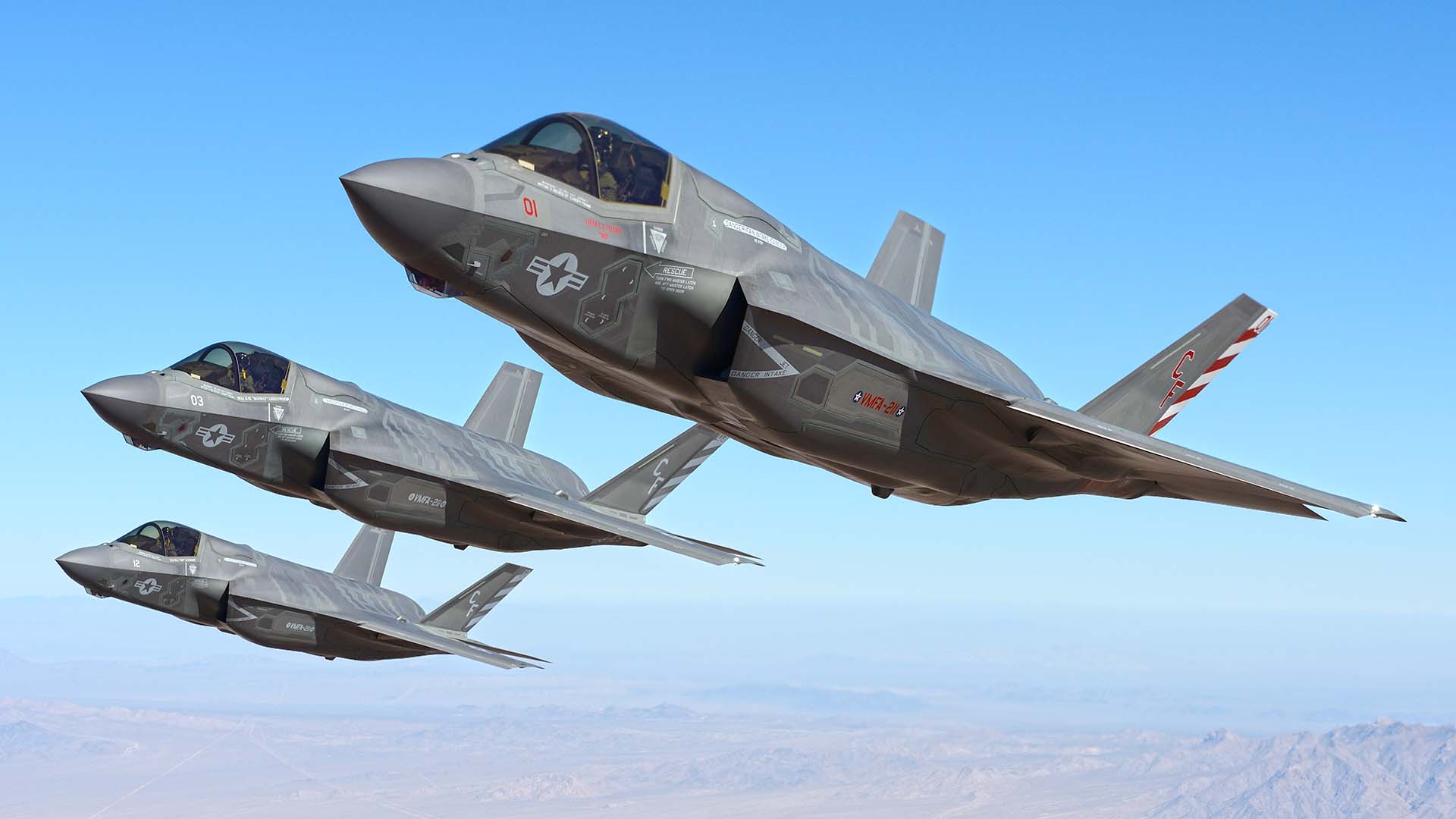The U.S. Air Force is back in the Large Force Exercise business after two of its renowned Red Flag exercises kicked off on Monday. Red Flag is acknowledged as the world’s premier air combat exercise and is considered to be a vital means to prepare aircrews for high-end aerial warfare.
Red Flag at Nellis Air Force Base, Nevada, and Red Flag-Alaska at Eielson Air Force Base, Alaska, both started on Aug. 3, 2020, albeit with a smaller than usual numbers of participating aircraft. It marks the first of these major training events since the huge Red Flag 20-2 was halted early in March after a visiting NATO airman was diagnosed with COVID-19. Red Flag-Alaska 20-1, which was planned for April-May this year, and the 20-2 event that was scheduled for June, were also canceled.
Both of these traditionally huge events have a reduced footprint this time around due to measures that are designed to mitigate the effects of the ongoing COVID-19 pandemic. Fewer units help to reduce personal interaction in confined workspaces, in locations such as the famous Red Flag operations building at Nellis, where the virus might more easily spread. A media release from Nellis underscored the importance placed on the kind of high-end integration training that Red Flag affords: “To keep the force tactically and technically sound, intense training is a must — even in the midst of a pandemic.”

Red Flag 20-3 was spun up by the Nellis-resident 414th Combat Training Squadron (CTS) on fairly short notice, according to local officials. It will run at the Nevada base for just two weeks, from Aug. 3 to 14. Red Flag has typically lasted for at least three weeks in recent years to allow a deeper level of concerted training for the participating units. It also represents a greater return on investment when factoring the huge logistical effort that is needed to bring units out to these types of events.
The current exercise in Nevada includes USAF F-15E Strike Eagles from the 335th Fighter Squadron at Seymour Johnson AFB, North Carolina, and from the 391st Fighter Squadron at Mountain Home AFB, Idaho. Four B-1B Lancers from the 9th Bomb Squadron at Dyess AFB, Texas, are also present along with a host of tankers and electronic support aircraft, plus aggressor support from the 64th Aggressor Squadron. The U.S. Navy is present with two squadrons of EA-18G Growers from Electronic Attack Squadrons (VAQs) 132 and 135, while U.S. Marine Corps F-35Bs from Marine Fighter Attack Squadron (VMFA) 211 are also at Nellis.

This is one of the smallest Red Flags in many years in terms of overall numbers, and the Nellis set-up features an unusual composition of participants, with no dedicated air superiority squadron for offensive and defensive counter-air, one of the core missions in high-end training like this. Instead, the Nellis team brings a clear air-to-ground focus, although all of the fighters offer multi-role capabilities. Notably, the F-35Bs are flying in a Suppression of Enemy Air Defense (SEAD) role, with B-1Bs and F-15Es working together in a strike/escort role over the adjacent Nevada Test and Training Range (NTTR). It’s not clear why this team of squadrons has been assembled, however, it could be linked to urgent pre-deployment training, which is usually conducted as part of Green Flag, both at Nellis and at Barksdale AFB, Louisiana.
“Our team built a great plan to keep our service members safe without compromising the rigorous training Red Flag is known for,” said Col William Reese, 414th Combat Training Squadron commander. He added: “We know our enemies won’t call a ‘time-out’ for this pandemic, so we’ve focused on warfighting integration and strengthened our partnership with our professional aggressor forces to ensure we are ready to defeat any threat.”

Meanwhile, Red Flag-Alaska 20-3, a Pacific Air Forces-sponsored exercise out of Eielson AFB utilizing the massive Joint Pacific Alaska Range Complex (JPARC), is scheduled to run over the same period as Red Flag 20-3. It is being used to provide a series of challenging training events for the newly re-formed 356th Fighter Squadron, which is Eielson’s first F-35A unit, the details of which you can read about in this recent War Zone feature. “I’ve participated in a couple of large-force exercises with a lot of jets in one area and I’m interested in seeing what challenges and abilities this exercise will bring,” said 1st Lt Billy Mullis, one of the squadron’s young F-35 pilots.
Most of the participating aircraft for Red Flag-Alaska are from Eielson and nearby Joint Base Elmendorf-Richardson, however, this exercise will also include operations originating from other bases further afield. “This is the first large-force exercise since this pandemic began,” said Lt Col Randy Kinsey, the 18th Aggressor Squadron commander. “We have to start somewhere, so why not here on a little bit [of a] smaller scale.”
While the Nellis event this time around features Marine F-35Bs operating in a SEAD role, the Alaskan iteration pairs F-35As from the 354th Fighter Wing at Eielson and from the 388th Fighter Wing at Hill AFB, Utah. They face opposition from Eielson’s resident 18th Aggressor Squadron. It will be the first chance to bring together the unprecedented number of stealthy 5th generation fighters that are being amassed by the Pacific Air Forces in Alaska and will see two new squadrons of F-35s combining with the F-22A Raptors from Joint Base Elmendorf-Richardson.

Getting back into the swing of large-scale exercises is vital to the pairing of Lightning and Raptor in Alaska, but it also sends a message that the U.S. military is maintaining its high-end warfighting training in turbulent times.
Author’s note: A big thanks to Michael Grove for letting us use his B-1B shot for our banner image. Check out more of his stunning images here.
Contact the author: jamie@thedrive.com
